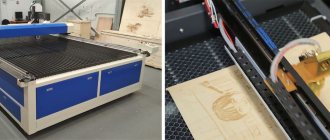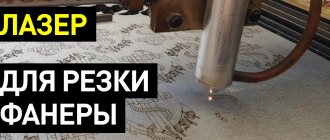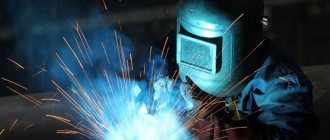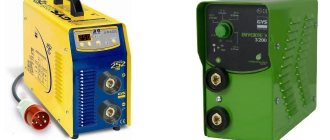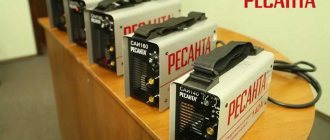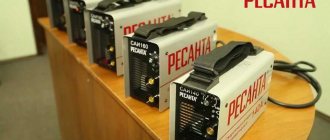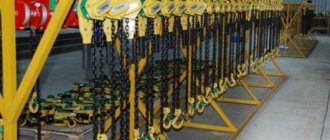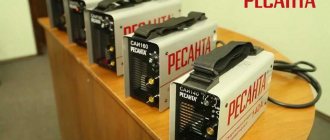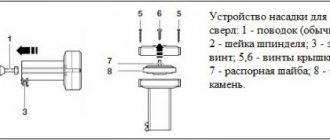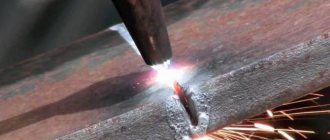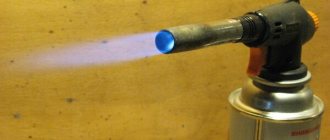When repairing roofing coverings, it is often necessary to use hot air and even fire: to melt bitumen, melt the underside of roofing felt, and even solder the edge of a metal sheet. And for this you already need special tools. But why not just set the same roofing felt on fire with a homemade torch if our goal is to melt the bitumen?
The fact is that you won't succeed this way. How do you direct the fire in the right direction, especially when there is wind? And how long will such torches last, since the work of laying the roof will be serious? These two main functions are performed by a gas burner. And now we’ll tell you how to choose it.
What are gas burners for roofing?
A gas burner is an indispensable thing when repairing a roof. It not only lays sheets of roofing felt, but also heats up the mastic and even seals small seams and holes. Here is a complete list of all operations:
- Cutting and soldering of metal elements.
- Removing the old layer of paint.
- Sealing small cracks.
- Melting mastic.
- Heating sheets before laying.
- Strengthening butt seams.
A typical roofing gas burner consists of a comfortable handle, a tube that supplies gas, and a metal cup at the end. A hose is connected to a special connector on the handle, and the required amount of gas is supplied to it from the cylinder. And you need to regulate the pressure through the valve on the reducer.
In practice, everything is simple: we press the handle lever, the gas enters the hose, and at the outlet of the glass, a combustion of a mixture of gas and air is formed, which we first ignite with a match. The flame temperature is so high that it can reach 1500°C! Using a valve, you can regulate not only the strength of the flame, but also its length.
Conventional gas burners are light enough - within 1-1.5 kg - so that you can easily hold them in your hand and not drop them from fatigue. And the role of the glass is precisely to shape the flow of flame in the desired direction. The design of the glass is precisely shaped in order to maximally protect the flame from being blown out by the wind. Moreover, both the glass and the handle are made differently for different burner models. Although they have the same operating principle: starting a gas burner is no more difficult than a kitchen burner - using an ordinary match or lighter.
Almost all modern gas burners for roofing provide a means of adjusting operating modes: standby mode and operating mode. The standby mode is designed specifically to save fuel.
Different models of modern gas burners differ from each other primarily in the principle of mixing air into the gas. Older burners are connected to an oxygen cylinder, while modern ones can take air from the atmosphere, which is more convenient, of course. Even the gas the burners use can vary. There, most often propane is used, but there are also units that run purely on methane. But we will also note other differences, based on which you can make the right choice.
Standard gas burner in action:
Mini soldering torches
1st place – mini gas burner with soldering attachment
Designed for both heating medium-sized parts and for contact soldering due to the heating of the tip from the flame. A kind of soldering iron without wires. The gas tank capacity is 8ml. The flame temperature when filling with butane reaches 1300 degrees Celsius, and the tip temperature – 450 degrees. The flame length is adjustable from 4 to 6 cm. The burner length is 13 cm and the diameter is 1.5 cm.
Advantages:
small and inexpensive, the refill is enough to solder several medium-sized parts, there is a nozzle for contact soldering, it is easy to refill.
Flaws:
no piezo ignition.
2nd place – gas micro burner
There is nothing in it except a tank with a filling valve and a nozzle with a gas supply regulator. The ZC57100 does not have piezo ignition and it is supplied unfilled, so you will also have to buy a gas cartridge - it will be suitable for lighters. In general, to solder two wires or heat heat shrink without a soldering iron, such a torch is enough. The burner is also about 20 cm long and weighs 43 g.
This is the cheapest burner you can find anywhere.
Advantages:
the cheapest, easy to refill.
Flaws:
small flame, the filling runs out quickly, there is no piezo ignition.
3rd place – mini gas soldering iron KVT XZ-1
This remarkable soldering iron from the gas powered brand features piezo ignition and comes in a case with a set of 4 soldering tips, a spool of solder, and a tip cleaning sponge. Thus, the declared power of the soldering iron for contact soldering is 137 W - this is a lot for a soldering iron with a length of 21 cm and a weight of 120 g. Electric soldering irons have never dreamed of such weight and size characteristics. This soldering iron is not positioned as a torch, but it can be used as a torch - the flame is pencil-type.
Everyone loves this one, which is why it ended up in 3rd place.
Advantages:
burner from a famous brand, easy to solder, set of components, good case, high heat output.
Flaws:
high price.
4th place – gas burner IRIS BARCELONA
This torch is not only designed for soldering, welding, repairing electronic devices and jewelry. The flame of this burner is of course adjustable. Can be charged with a standard lighter gas cylinder. The flame length reaches 3 cm. The operating time is about 20 minutes. The flame temperature reaches 1300 degrees Celsius. The length of the burner itself is exactly 20 cm.
The price is like this.
Advantages:
small size, piezo ignition, brand.
Flaws:
The length of the flame does not allow heating medium and large parts.
5th place – butane burner KVT X-220
It is positioned as a burner for construction and repair work. She looks very stylish. The knurled handle fits nicely in the hand. Has a piezoelectric flame ignition system. The capacity of the cylinder for highly purified butane is 22 ml. This amount of gas is enough for 110 minutes of continuous operation. The flame length is adjustable from 30 to 80 mm from a sharp wedge-shaped flame to a soft flame with yellow tongues. The weight was only 226 grams with a length of 14 cm.
.
Advantages:
a good option for desktop work, there is a stand, piezo ignition, and a comfortable handle.
Flaws:
It's bulky, you can't put it in your pocket, you can't fit it into a narrow place.
Which is better quality: professional or budget?
So, professional contractors purchase usually expensive professional gas burners that are reliable and safe to use. But for a home craftsman, a small, convenient tool without any additional pretensions will be suitable for equipping and repairing the roof of your own home. Will the quality of work be worse? Not at all! It’s just that such a gas burner is not suitable for industrial work, where it is used almost every day and where uninterrupted processes and absolute safety come first.
It is also not acceptable to have a situation where a team goes to a new facility (and, of course, deadlines are definitely running out), and the burner is defective. There is neither time nor reserve to stop everything and go out to purchase new equipment. Whereas, with careful handling in the hands of a home craftsman, even the most Chinese unit will serve faithfully for decades. Especially if you use it no more than once a season.
And in the end, when working with a massive professional burner or with a regular one, you will get the same result. But no matter how expensive and professional the gas burner is, before each use, be sure to check its connecting hose, the tightness of the connections and the clogging of the mouthpiece. Such problems do not occur often, but if you miss a defect, there is a risk of serious consequences.
Although, if you have an idea to buy the cheapest “lighter” (how much does it cost to cover a garage roof?), then we will hasten to dissuade you. The fact is that if a gas burner has a weak gearbox, then the fire will be no more useful than the same blowtorch. The work will proceed extremely slowly - while you heat one part of the sheet, the second will already have time to cool down. As a result, you will simply have to remove the gearbox and work without it at your own peril and risk.
Application area
A gas burner can be used where working with a soldering iron is impossible or impractical.
Household work, construction, and welding in laboratories are traditionally the main areas of application, but it is also used in radio engineering and tourism.
For example, propane tools with a wide nozzle are used to heat and lay bitumen coatings and asphalt during road work. In conditions of remoteness from civilization and in field work, the flame of burners is used to heat shrinkage materials, heat and dry the surface.
Butane torches are more common for the following high-precision work:
- Modeling.
- Home appliance repair.
- Burning out.
- Jewelry production.
A large number of nozzle options allows you to carry out work of varying complexity; such gas burners can work without interruption for up to 50 minutes.
The low cost of household hand burners with small gas cylinders, as well as ease of use, allows them to be widely used in everyday life. Despite the small dimensions of the device, the heating temperature can reach from 500 to 6000 °C, which will ensure reliable welding of medium-sized parts. For more complex work, you should use stationary devices that allow you not only to solder, but also to weld parts without restrictions on the size of the workpieces.
Which is safer: compact or large?
At first glance, it seems that hauling a gas cylinder onto the roof is the most dangerous undertaking. Moreover, today you can purchase more compact versions of gas burners:
But in fact, it is precisely these cans that can cause burns and even fire. We are talking about counterfeit Chinese products, which are abundant in the construction market. A large cylinder is still located far from the operating burner, while a small cylinder is constantly in the high temperature zone, which is not at all safe. Decide for yourself!
One more point about safety. When choosing a gas burner for your roof, try to avoid counterfeits and overly cheap products - this is simply unsafe. So, the most common problem with such burners is that the operating pressure may be indicated in the technical data sheet as 0.05-0.08 MPa, but in reality it turns out to be up to 1.6 MPa, as in any propane burner. But the supplied gearbox is not at all designed for such parameters, and a closed valve may not withstand the pressure directly on the roof. Such a burner requires a gearbox, but an inexperienced user may simply not know about it.
Recommendations for selection
The purchased kit traditionally includes the burner itself, a number of nozzles and a replaceable gas cylinder. The type of gas is not very important for the operation of the tool.
By changing the nozzles, you can use the burner for:
- Cutting;
- Heating coatings, for example, removing old paint from metal;
- Plastic melts.
Pay attention to the type of flame that the nozzles produce:
- Vortex. High concentration flow suitable for most high heat intensity applications.
- Pencil. Used to create heat on a small work spot for precision work.
- The so-called Jumbo. Required for rough, heat-intensive work.
- Multi-purpose. Used to work with low temperatures, the softest flame.
If you follow safety rules and choose the right burner, this tool will please the owner for a long time and help in everyday life.
Which is more convenient: long or short?
If you value ease of use, then purchase a lever roofing burner, in which you do not need to constantly tighten and unscrew the valve. But how long should the handle be?
Thus, the length of the burner is not a style, but an important functional point: short ones, which do not exceed half a meter in length, usually make partial repairs, heat up individual areas and melt the necessary areas of the roof. But for larger-scale work, you will need a burner with a length of at least 80 cm.
Features of choosing a compact device
Before buying a gas burner, you need to decide on its purpose - for repairs, soldering parts, tourism, cooking. The choice of model depends on the tasks that the device will have to cope with
And here it is important to understand the differences between burner types
Varieties of popular devices
There are 4 main designs: “lighters” screwed onto a cylinder, with a fuel hose, blowtorches. There are also integrated cooking systems, but they are difficult to classify as mini. These devices are large in size and weight, expensive, and can only be used with original cookware.
Type #1 – portable torch lighter
The smallest “lighters” are convenient for household purposes and minor repairs. Some models produce more power and can be used for soldering.
Type #2 – balloon type mini-burner
Compact cylinder burners are convenient and light in weight - most devices fit in your hand and fall in the weight range of 70-90 g. They are easy to use, inexpensive, and relatively reliable.
The cylinder itself cannot be forcibly heated, so such burners are not entirely suitable for use in difficult weather conditions.
Another nuance is that the lightness of the design does not allow you to place large-capacity dishes (from 3 liters) on it. But for some models branded adapters are sold: hoses, additional legs.
The rating of the best gas burners for a can is presented in this review.
Type #3 – device with remote hose
But devices with a hose perform well in bad weather conditions. You can place bulky or heavy dishes on them. Fuel consumption in such burners is minimal.
A continuous wind shield can be installed around the burner with a hose, which will increase work efficiency. The design itself is distinguished by the wide setting of the legs and squatness. The permissible volume of dishes is up to 8 liters.
Often in such devices the nozzle itself is larger than that of the bulbs. Due to this, the dishes are heated evenly, and the flame power is conveniently regulated. The burner allows you not only to heat water, but also to fry and stew food.
Devices with a hose also have their disadvantages. They are heavier and larger in size. The hose requires careful operation; the part may break and lead to a gas leak.
Type #4 – blowtorch
Portable blowtorches are designed for the application of machining connections made of ferrous and non-ferrous metals. They are found in piping systems, electrical appliances, cables, and car parts. These also include torches for soldering copper pipes.
The characteristics indicate the flame temperature and power. A device whose flame heats up to 1200-1500°C can cope with parts up to 3 mm thick. A power of 2-3 kW is enough to heat and bend reinforcement up to 14 mm.
The scope of application of such devices is not limited to soldering. They do an excellent job of lighting a fire, working in a summer cottage (removing leaves, getting rid of insect colonies), wood burning, and culinary experiments.
Method of connection to the cylinder used
Most models on the market are adapted for threaded cylinders. But purchasing them in remote settlements is problematic.
If the hike will take place in such areas, you need to very accurately calculate the required amount of gas or additionally buy an adapter for a collet one.
Collet cylinders are also called “dichlorphos”. They are sold at almost any hardware store. But the seam design is less reliable, and the gas mixture is sensitive to low temperatures.
There is also a third type of cylinders on the Russian market - without threads with a bayonet mount. But they are represented only by the Campingaz brand and are not as widespread as abroad.
There are models adapted for use in conjunction with a threaded and bayonet standard.
Additional device options
The presence of piezo ignition is a useful addition, but it is still worth having a backup fire source with you. For some models, this element quickly becomes unusable.
If your camping burner is missing a grate, a protective cover on your computer fan can easily replace it. It is lightweight and does the job perfectly.
When choosing a device for delicate work, welding, soldering, you should pay attention to the ergonomics and balancing of the model. The shape of the body and the arrangement of the elements matter, because the burner will have to be turned on and off frequently. It’s convenient if you can do it with one hand
It is convenient if this can be done with one hand.
Overview of market offers
Gas-air burners are the safest of their kind. Easy to use, lightweight and creates a flame of sufficiently high power. But the modern market also offers more standard options that work without oxygen. Choose the one you feel most comfortable working with:
GG-2U: comfortable and light
GG-2S: against strong winds
And this is already professional equipment. This burner runs on propane and differs from previous models in that it works great in strong winds. The whole secret is in its structure - two valves and two housings, with which it is easy to precisely regulate the operating mode.
GGS1-1.7: universal option
This model is considered universal in the construction world due to its light weight, size and high level of performance. It is convenient for drying roofs and fusing soft materials. If necessary, it is easy to create an intense flame of up to 400°C, which is especially valuable in repair work. But such a burner can only be used on horizontal sections of the roof.
GGK-1: for precision repairs
This model features a heavier and more durable glass for burning old paint and waterproofing the roof. Perhaps this is the most convenient model for roof repair, especially since gas is supplied to it using a lever.
GGS 1-1.0 burners are well suited for minor work, especially repairing junctions, but can also be used for laying waterproofing. But the GGS-1-0.5 series pleases with economical fuel consumption.
GGS-4-1.0: four bells
And for professional installation of roofing materials, the GGS-4-1.0 model is used, which is equipped with four sockets at once and can heat the entire roll at once - all that remains is to quickly roll it out. Significant savings of time and effort! Moreover, it is easy for even one person to cope with such work, but for the repair of just one or two roofs of private houses there is no point in purchasing such equipment.
GV-3: for repairing metal roofing
This propane torch is specially designed for heating metals and manually soldering them, its glass is only 50 mm in diameter.
GV-111R: for stripping
Another popular gas burner is GV-111R. It is especially convenient for repairing roofs with old paint that needs to be removed, and for melting rolled bitumen materials.
GV-550: for junctions
This model is more suitable than any other for repairing roof junction points. The maximum heating of bitumen using this tool is 300°C.
GV-900: heavy fire
The most convenient sample, which gives a maximum flame length of up to 900 mm. You can work while standing, at full height, which is comfortable for daily tasks.
GV-850: fine adjustment
This propane torch is equipped with a special valve, which makes it possible to precisely regulate the amount of gas and the length of the flame using a lever. But such a burner does not operate on gas alone—technical oxygen is necessarily used here.
GGS2-1.5: parallel sockets
This burner is equipped with two parallel high-output sockets.
And finally, let's talk separately about homemade burners, which today are also often used in roof repairs.
SIEVERT: modern version
Torches for soldering with gas from a can
6th place – metal burner for a spray can
A very simple and narrow burner that fits onto a gas canister. The regulator and narrow nozzle allows you to get to the right parts in narrow places. There is no piezo ignition, but everything looks high quality - there is metal all around and a large gas supply regulator. A butane cylinder allows you to get a temperature of about 1300 degrees Celsius from this burner.
.
Advantages:
a lot of metal, narrow nozzle.
Flaws:
no piezo ignition.
7th place - a standard burner that fits onto a can
Positioned as a burner for tourists and cooking: barbecue, cakes, sushi, etc. Of course, it can be used for soldering, cutting and welding metals. Piezo ignition and flame regulator are present. The burner works classically with butane. The body is made of plastic, the nozzle casing is made of stainless steel.
The cost is like this.
Advantages:
well suited for cooking, has piezo ignition.
Flaws:
The body is made of plastic, so you need to be careful not to break it.
8th place – canister burner with a wide nozzle
The brass burner does not have piezo ignition, but it can fry barbecues and massive metal parts well. Orange Adjuster allows you to easily change the flame length. Butane from a cylinder heats the flame to 1300 degrees.
.
Advantages:
Well suited for cooking and massive parts.
Flaws:
no piezo ignition.
How to make a gas burner yourself?
Like any other tool, you can also build such a burner with your own hands if you are confident in your future safety. But remember, a gas burner is a complex device, and it is important to follow all the rules.
In order to make a torch, you will need a divider and a metal rod - attach them to a handle made of special heat-resistant wood. Borrow a gas supply hose from the gas welding system. And finally, examine the unit for the slightest gas leaks - this is important!
Or everything can be done simpler for small roofing repairs (the result is a fairly powerful burner, note):
Obviously, it is better to buy a ready-made gas burner with all the certificates than to even entrust its manufacture to a good craftsman you know. Just when purchasing, pay attention to the material used to make the burner - only high quality! After all, any burner heats up to a fairly high temperature, and therefore the material must be ultra-strong. Next, look at the handle - it should be equipped with a holder made of durable wood or heat-resistant plastic. This is important if you don't want to get burned unexpectedly while working.
That's all the subtleties!
Choosing a torch for roofing work
The main operational characteristics of gas burners for roofing work are:
- Propane consumption, kg/h.
- Thermal power of the burner, kW.
- Limits of torch length adjustment, mm.
- The largest heating width of roofing felt or other material used for laying soft roofing.
- Nominal surface heating temperature, ºС.
- Specific fuel consumption per unit of covered surface, kg/m2.
- Burner weight, kg.
The parameters are selected for ease of use. For example, a burner that weighs more than 1.5...2 kg is simply inconvenient to work for a long time. The length of the torch is determined in the same way. Usually this parameter is taken within the range of 300...900 mm, and in the latter case the burner can be operated while standing.
A number of characteristics depend on the heat capacity of the soft roofing material. In particular, for roofing felt to be ready, temperatures of 160…180ºС are required, and for surfaced materials – 300…350ºС.
For the productivity of the process, the relationship between the thermal power of the burner W (indicated in the product passport) and gas flow V (this parameter is important for propane cylinders) is important. To calculate, you can use the dependence
Q = 12.88 kWh/kg – calorific value of propane;
n is the number of nozzles/sockets through which the burning gas-air mixture is directed to the heated (or melted) roofing material;
η = 0.8…0.91 – efficiency of the heating process (with an increase in the number of nozzles, the efficiency decreases).
The most popular models of gas burners for roofing are:
GV-850. It has a control valve for gas supply; the length of the torch is easily controlled using a lever. The power of the burner allows it to be used effectively also for heating metal-plastic pipes and for preparing copper alloys for welding or soldering. Price – 1700...2200 rubles;
GGS-1-1.7. It is popular due to the high heating temperatures achieved, simplicity and reliability of the design. Price - 2000...2200 rub. A version of the same device, but with 4 bells and a roller, will cost 12,000...12,500 rubles;
Help with stuck bolts and nuts
Old and stuck bolts or nuts are very difficult to unscrew. This process is often accompanied by licked edges or splines, which makes further work even more difficult.
Before unscrewing the nut, it is enough to heat it with the end of the flame, since heating causes the metal to expand. The main thing is to catch the moment when only the nut warms up, but the bolt remains cold. Even if you don’t guess correctly, the work will still be easier, since the heated rust or thread locker softens from the heat.
